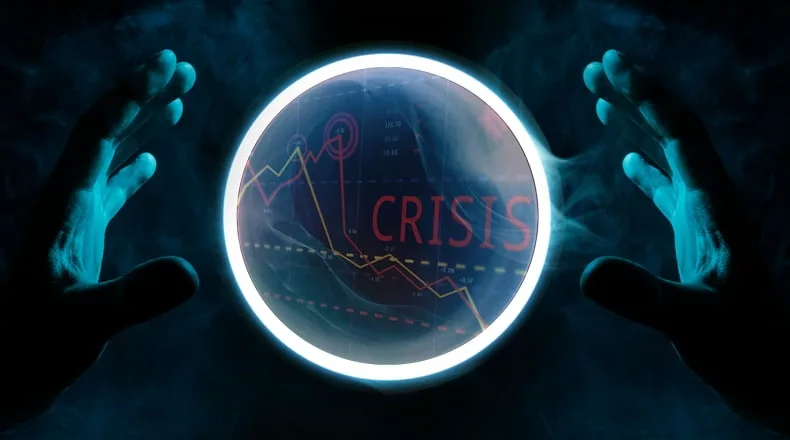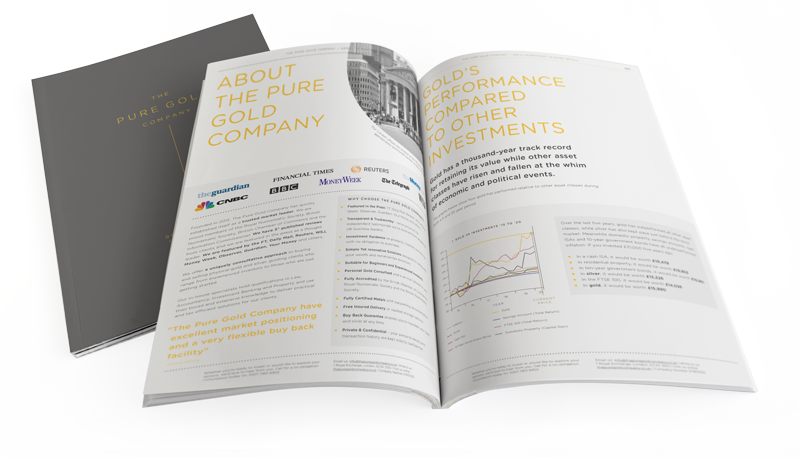In 2020, almost $94 billion was invested in stocks, so a lot of people have good reason to want to predict a fall. That way you could hold onto your shares until just the right moment, then sell before the market collapses around you. Instead, most people end up in the same place, at the bottom of the market waiting out the storm with heavy losses. Are there signs we keep ignoring? Is it possible to predict a market slump? And if not, how can you protect your assets anyway? (Answer – diversify with safe-haven assets like gold).
Looking back
Economists and investors love to review the warning signs that came before a stock market crash to look for potential patterns that could predict future falls. But there’s a reason they say hindsight is 20:20, because the actual inflection point is very difficult to find until after it has happened.
Stock Market Speculation
To fall far you must climb high, and stock market crashes invariably follow a steep rise in share prices, often fuelled by rampant speculation. Speculators don’t buy stocks because they believe there is inherent value in the company, they buy on the expectation or hope that the share price will rise (or fall in the case of short sellers). Speculation usually breeds more speculation as investors pile into a rising share hoping to benefit from the uplift. But when stocks are inflated beyond their true value, a bubble is formed, and it must either deflate slowly or, more often, pop with far more dramatic effect.
The dot com bubble is an extreme example of rampant speculation. As the internet grew rapidly, investors piled into tech stocks that just kept on rising, well beyond their fundamental valuation levels. As prices kept going up, more investors joined the frenzy, acting with “irrational exuberance” and escalating asset values.
The subsequent crash is a sober reminder of the dangers of speculation. The Nasdaq Index plummeted over 75% between March 2000 and October 2002 and alongside the dotcom millionaires, many more people lost billions in savings and retirement investments.
Overvaluation
The cycle of speculation leads to overvaluation because speculators don’t really care what a company is worth, only how much its stock will rise. In addition, overvaluation can also occur because a company’s financial position changes rapidly. The valuation itself is subjective as investors may use different metrics to decide whether a stock is over or undervalued, like “price to earnings ratio”, “price to book ratio” or “free cash flow ratio”.
When the market is not overheating, overvaluations tend to self-correct, with stock prices coming down at a measured pace. But a frenzy of overvaluations is a definite stock market warning sign. The difficulty is knowing when to sell up because you could just as easily miss out on substantial gains if you get out too early.
Economic slowdown
Recessions are a bad omen for the stock market. When income and employment stagnate or decline, consumers struggle, businesses struggle and the shares in those businesses come under pressure. Recessions are usually associated with double-digit market declines but the trajectory doesn’t follow the recession directly. Stocks often start to decline before a recession officially starts and then turn up before the end of the recessionary period.
But there is no definitive way to recognise an impending recession or call the top of the market, which means recessions are yet another way to see a stock market slump in the rear-view mirror.
Data-driven insights
Investors hoping to get ahead of the pack and predict a recession often see an “inverted yield curve” as a signal of impending economic gloom. To anyone without a finance background, the term may sound complex and incomprehensible, but what it means is that investors think there is more risk to the market now than there is in the distant future. Usually, the opposite is true, so when the yield curve ‘inverts’, it indicates that investors foresee a market downturn soon.
So how does the yield curve work? In a stable economic environment, the interest rate (or yield) on government bonds will be higher for longer-term bonds (10-year) than bonds that mature sooner (2-year bonds). This is because there is a lot of uncertainty about what rates or inflation might do in the next decade, so the risk is higher further into the future, and the market demands greater compensation for that risk.
But when the yield curve is inverted the opposite happens. Returns on 2-year bonds are higher than 10-year, indicating investors expect higher interest rates or greater economic risk sooner rather than later and demand greater compensation for that risk. Essentially, investors are calling for a recession in the not-too-distant future.
The inverted yield curve is a good but not perfect harbinger of a recession. It has preceded most of the recessions in the US since 1945, but not all inverted yield curves resulted in a recession, and some early recessions were not preceded by the dreaded curve beforehand. That said, the yield curve in the UK in July was the most inverted it has been in 23 years, which is an alarming indicator for any market watcher.
It’s also important to remember though, that there are many factors that affect an economy, from politics and local circumstances to wider global geopolitical and economic pressure. Some are visible in advance and others could never have been predicted.
Predicting the unpredictable
Aside from a few learned pandemic scientists, no one could have predicted the outbreak and spread of COVID-19 or the global lockdowns that paralysed economies and caused stock markets to plummet – the FTSE 100 fell 31% in the first quarter of 2020. This unprecedented event could not have been foreseen, and millions of investors around the world were impacted.
On a smaller but equally unpredictable scale, the unfunded mini-budget announcement in 2022 had an unexpectedly severe impact on sterling and the UK stock markets. These types of unprecedented or unexpected events can’t be predicted in advance, but they will always happen. Stock markets will decline. Pandemics, recessions, or political upheaval will happen. It’s just a matter of when.
Diversify Diversify
It is inevitable that there will be times when the stock market will fall, and it’s difficult or impossible to predict exactly when, so the best way to protect your investments is to diversify. If you have assets invested in shares, you should also have assets that tend to rise when shares are falling. So-called safe-haven assets, like gold, have a long history of retaining value during times of uncertainty, and investors tend to flock to gold when markets are falling.
Gold has increased over 500% in the last 20 years, over 75% in the last 10 years and almost 6% in the last year. Its immutability and rarity are the driving force behind its abiding value, and owning physical gold eliminates more counterparty risk than most electronic investments. Physical gold is also VAT and capital gains tax-free under certain circumstances, adding to its value as a diversifying investment.
If you can’t have a crystal ball, a gold coin or bar will do just as well.


